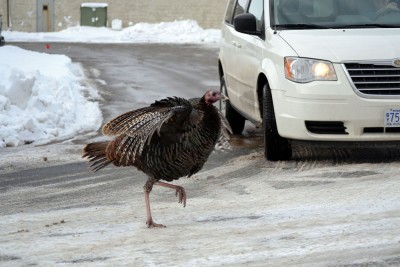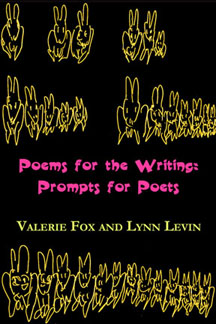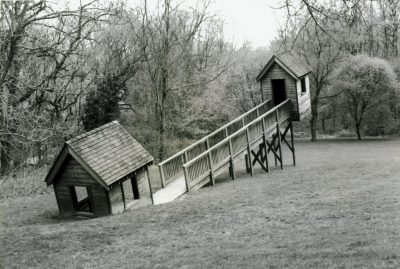Laurel Hooker
WHY DRAW TREES?
[slideshow_deploy id=’20606′]
Before I went to art school, before I decided to become a painter, before my work and classes carried me far away into the world of fine art, all I really wanted to do was draw. I drew the way a lot of teenagers do–carefully, self-consciously, and often. I drew unaware of the complications of critical analysis, ego, sophisticated processes, and expensive materials that would soon converge in the realm of my higher education.
When I was a student at the Tyler School of Art in Philadelphia, drawing nice pictures soon became the farthest thing from my mind. In that four-year whirlwind of studio classes, I roved quite far from simple drawing. I studied glassblowing, ceramics, on-loom weaving, and figure modeling. As a painting major, I took drawing classes, but they were secondary to my painting classes. After graduation, I went home to my parents’ house in east Tennessee, where I listened to the drone of cicadas in the evenings and slept until noon. For the first time in four years, my life slowed to a walking pace. I made a couple of paintings; I carried a small watercolor kit with me as a way of keeping in habit. And I was doing something I hadn’t done in a long time: I was looking. Looking at things that I didn’t get to look at during the years I was living in North Philadelphia: Trees. Grass. Flowers. Mountains. Rivers. The ground at my feet, even.
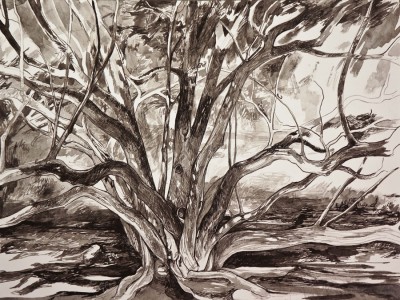
Had I ever really looked at the ground? Had I tried to separate pebble from milkweed with only my eyes? Or looked into the matrix of blades and buds, clustered and sprouting, snaking in ribbons, spurting from muscular stalks? What about the trees? Had I ever examined every leaf? Had I watched the entire narrative curl of a single branch into its stems?
One of my drawing professors in college once told us, in a dramatic moment of frustration, that she hated student drawings of trees. “Please, please, no more trees!” she sighed, rolling her eyes. I was perplexed. No trees? Should we just omit them? Draw only buildings? The ground?
And yet, I understood her point. Trees are hard to see. And even harder to see well. I could suddenly imagine legions of students mass-producing the same childhood version of the classic crayon-book tree, a generic shorthand of cylindrical trunks and cartoon foliage. It made more sense for us students to invest our senses in the moment, in the perceived spaces around us, without getting caught up in trees we’d learned by heart.
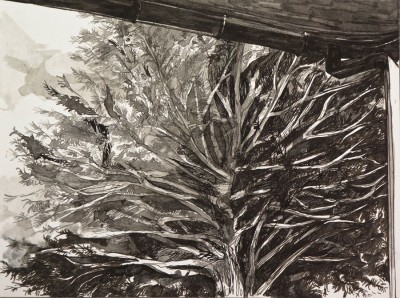
But I’m not a student anymore. Last August, I moved back to Philadelphia and, being without a painting studio, I picked up my drawing pen and dipped it in ink. I wanted to draw something from life. I wanted to draw something in front of me, something present. I looked out across the front porch and saw a small arched ash tree. This was what I wanted to draw.
Trees and plants have been my subjects ever since. With pen-and-ink I can capture gesture, immediacy, and fluidity with precision. India ink, which can be diluted with water, allows the full tonal range of graphite, but without the option to erase. I find that this restriction stimulates my attentiveness. While I do draw trees and plants out of admiration for their singularity and form, I consider my tree drawings exercises in bearing witness, not pretty pictures. In art, plants are often relegated to background status; wrongly so, in my opinion. Drawing them intimately helps me appreciate the savage power and poetry of vegetal life.
When you begin drawing a tree or a garden, you become locked into its convolutions, and an endless, groping attempt to understand the living network of light and shadow. It’s a task I will never completely master—and that’s what I like about it.
The Drawings:
“Sedgwick Street Garden,” gouache and ink, 9”x12”, 2015
“Carpenter Lane Garden,” pen and ink, 9”x12”, 2015
“Porch on Pelham Road,” pen and ink, 6”x9”, 2015
“Little Ash Tree,” pen and ink, 6”x9”, 2015
“Katsura Tree,” pen and ink, 9”x12”, 2015
“White Pine,” pen and ink, 6”x9”, 2015
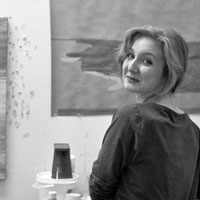 Laurel Hooker is an artist living and working in Philadelphia. She received her BFA in painting from Tyler School of Art at Temple University. Brought up exploring the mountain wilderness outside of Knoxville, Tennessee, the natural world remains a central source of inspiration for her work. Her additional enthusiasms include all things musical, ethical, and edible. Further images of Laurel Hooker’s work can be found at www.laurelhooker.com
Laurel Hooker is an artist living and working in Philadelphia. She received her BFA in painting from Tyler School of Art at Temple University. Brought up exploring the mountain wilderness outside of Knoxville, Tennessee, the natural world remains a central source of inspiration for her work. Her additional enthusiasms include all things musical, ethical, and edible. Further images of Laurel Hooker’s work can be found at www.laurelhooker.com
Read more from Cleaver Magazine’s Issue #12.

